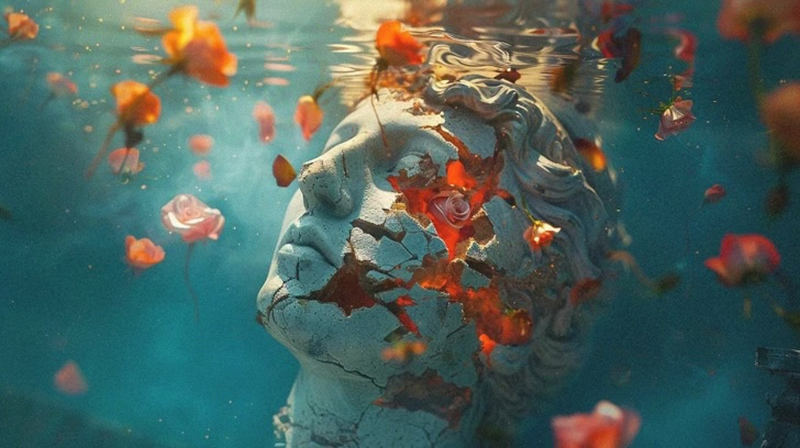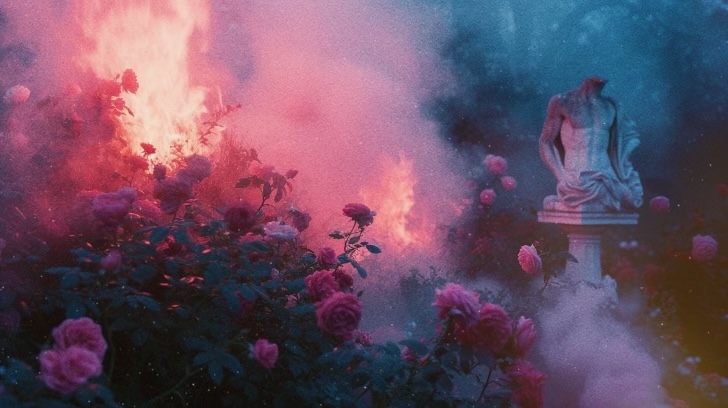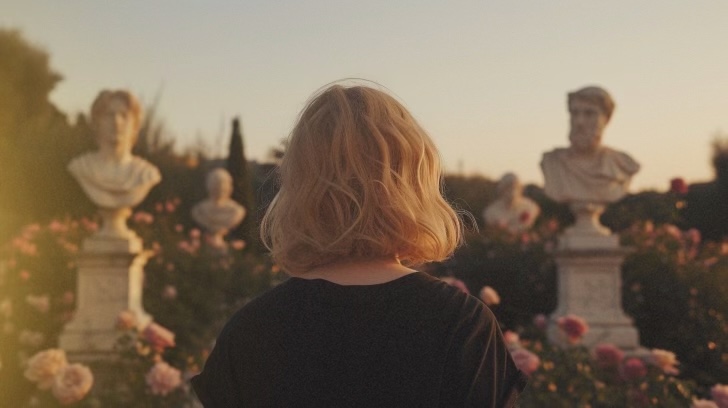Software including Runway (AI), After Effects, and Premiere Pro worked magic to bring 60 individual shots created by Anais La Rocca to life

On April 3, 2024, the music video of “Thorns” by Emmrose will go public on YouTube, and the image of someone who looks like the artist will be the video’s star. But upon closer look, we realize this is not exactly Emmrose, but a dream-like virtual representation of the artist created by the director and digital artist Anais La Rocca. La Rocca, a director for commercials for many high-profile brands such as Google, Neiman Marcus, Cartier, Apple, Atlantic Records, and Marie Claire to name just a few, chose the song to create an AI magical wonderworld, proving that AI can be used in an ethical way as another digital device in the designer’s toolbox. The song she chose to work with, “Thorns”, was recorded, arranged, mixed, and mastered by Mike Abiuso at Behind the Curtains Media, who collaborated with Anais in the past when he composed, performed, and produced the audio track for the 2021 national holiday commercial for Neiman Marcus department stores.
When approached by La Rocca to work on the project, Emmrose initially hesitated to work with AI content due to the current controversy of artists feeling that AI will replace their work and creativity. On the contrary, we learned by working with a seasoned artist such as Anais that this music video was far from writing a prompt in a chatbot.
The director describes her working method:
“In the making of the music video, we embarked on a journey spanning over 60 meticulously animated shots, transforming it into a dazzling four-minute film.
Every scene began as a static image, painstakingly crafted with the aid of AI and a lot of photo retouching and artistic finesse to capture the essence of Emmrose, and ensure a seamless transition of color and lighting as the story unfolded. From the golden hues of sunset to the deep blues of dusk and the mysterious shades of evening, each frame was meticulously hand-painted, lit, and colored to chronologically evolve.”
“Enter the realm of digital sorcery, where a medley of software including Runway (AI), After Effects, and Premiere Pro worked their magic to bring the stills to life. The process required a lot if patience. Finally, in the editing room, Premiere Pro took the reins, weaving these enchanting clips into a seamless tapestry. No AI was involved in this final act of cinematic finesse—it was all human hands on deck, infusing each frame with passion and purpose.
The journey was as thrilling as it was technical, a testament to the boundless possibilities of our digital playground. With AI as a new tool, we were able to transcend the constraints of budget and geography, crafting a story without limits or inhibitions.
I found that using AI as a tool for art opens up the creative— we weren’t limited by budget or location— we were able to tell the story we wanted, no holds barred.”
“I truly love this song, even after listening to it a bazillion times. I was very inspired by something Emmrose said after writing “Thorns”: I don’t feel like my past is holding me down anymore. This is the heart of the film and story I wanted to tell — a woman setting herself free.”
Mike Abiuso discusses the unusual way “the song “Thorns” was recorded in his studio:
“This was a very non-traditional production and even less traditional arrangement. Initially, it was arranged with vocals and piano as the focal point. To fill out an intimate stripped-down approach, the sonic gaps were filled in with Rhodes, bass, acoustic guitar, and a ton of vocal layering that were treated with a lot of subtle strokes of ambiance and space.”
Around the time we were working on “Thorns,” we were talking about bringing more string players into Behind the Curtains. Coincidentally, Suzanne invited a 15-year-old viola player named Andrew Jensen to the studio to see the space the day we were working on the song. Being that he brought his viola, I encouraged him to go into the live room and do a few impromptu improvised passes on the song. After one pass, we honed on a few ideas. I began directing him towards a layered arrangement, where we dug into a bunch of different articulations, dynamics, staccato, legato, pizzicato, you name it. Before you knew it, we had numerous ideas laid down to sift through, edit, and arrange that led to the final composition of “Thorns”.
In this take on “Thorns,” the past takes form in a garden brimming with ancient marble statues— depictions of lovers, friends, heroes, and villains from bygone times. Each statue stands as a tribute, capturing its essence in an idealized, immortal marble form. As the film unfolds, we see our heroine lighting the garden on fire, leading it all to crumble and burn away.
Past loves leave lasting scars, yet these wounds often transform into beautiful reminders of what was once felt, and shape our resilience and resolve. In the final scene of the “Thorns” video, our heroine kneels beside the remains of a shattered statue, resting her head on it, symbolizing this poignant truth. I am a hopeless romantic.




